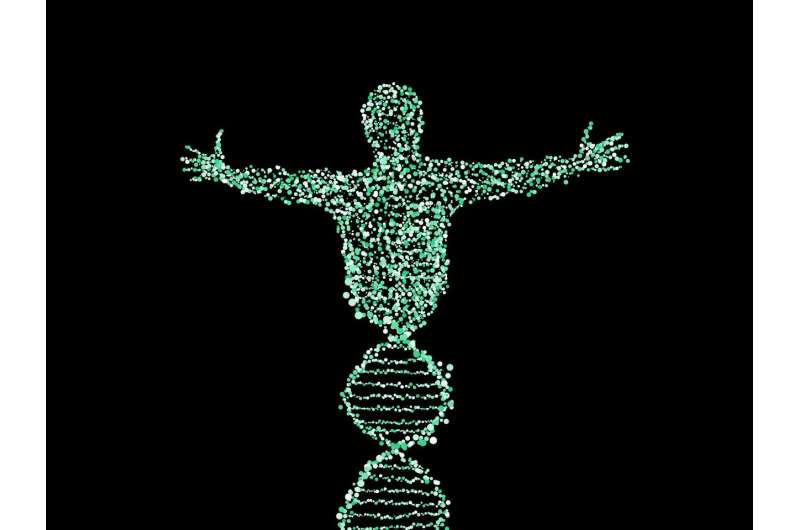Researchers uncover mechanism behind DNA damage control

DNA damage is occurring in our cells all the time due to external agents, such as exposure to sun, or internal agents, like reactive oxygen species. To detect and repair DNA lesions, cells have evolved DNA damage response. Activation of this response underpins genome integrity, which is crucial for preventing the onset of many human pathologies, including hematological disorders, neurodegenerative diseases, and cancer.
DNA damage elicits transient yet profound alterations in cellular gene expression programs. Previous work has established that cells need to shut down gene transcription by RNA polymerase II to facilitate DNA repair and limit the production of abnormal transcripts.
In a study that appeared online on 26 February in the prestigious journal Molecular Cell, researchers at the University of Helsinki have now added a new wrinkle to the story. The collaborative effort led by the Barborič laboratory has uncovered that activating gene transcription is equally important for how cells confront the genotoxic assault.
Transcription of a typical gene in multicellular organisms consists of many phases. Soon after the polymerase starts transcribing, it pauses due to the actions of negative transcription elongation factors. Releasing the pause by the positive transcription elongation factor b (P-TEFb), which is a heterodimeric CDK9/CycT kinase, has emerged as a critical rate-limiting step that enables transcription to the gene's end. Adding yet another layer of regulation, a major fraction of P-TEFb resides within the 7SK snRNP complex in which the kinase activity of CDK9 is repressed, precluding unchecked gene activation.
With the combination of biochemical and genome-wide techniques, the researchers have found that genotoxic stress activates P-TEFb via RBM7, an RNA binding protein that was previously linked to facilitating RNA degradation. Upon activation of the p38 MAPK signal transduction pathway, the phosphorylated RBM7 interacts with 7SK snRNP to trigger the release of P-TEFb.
Subsequently, the active kinase relocates to chromatin, triggering induction of thousands of short coding and non-coding transcription units. Importantly, the authors showed that the transcriptional response is critical for the survival of stressed cells. When they interfered with the RBM7–P-TEFb axis, the cells became hypersensitive to DNA damage-inducing agents, leading to their demise.
"As the results were coming in, the bigger picture began to emerge. We found how and why CDK9 gets activated upon genotoxic stress," says Andrii Bugai, doctoral student in the laboratory and first author of the study.
"In the final analysis there are no alternatives: cells either induce gene transcription or they will die."
"In times of crisis, the gloves are off. Cells de-repress a principal transcriptional kinase, which in turn eliminates the main roadblock to effective polymerase elongation on key pro-survival and DNA damage response genes," says Matjaž Barborič, Sigrid Jusélius Senior Investigator and senior author who spearheaded the work.
"In retrospect some pieces of the story were already there, but with new experimental approaches, we were able to decipher the critical transcriptional pathway and connect the dots."
Emerging body of work shows that prosperity of cancer cells can depend on the addiction to regulators of gene expression, including transcriptional kinases such as CDK9. Highly specific CDK9 inhibitors have been developed, and some are already entering clinical trials. Given that the new study identified CDK9 at the core of cellular DNA damage response, the authors are optimistic about the prospects for novel anti-cancer interventions.
"Because chemotherapeutic drugs can activate DNA damage response, the drug-induced cancer cell killing might be greatly enhanced when combined with specific pharmacological inhibitors of CDK9. This combinatorial approach or its derivatives could be an important way forward in our battle with cancer," says Barborič.
More information: Andrii Bugai et al. P-TEFb Activation by RBM7 Shapes a Pro-survival Transcriptional Response to Genotoxic Stress, Molecular Cell (2019). DOI: 10.1016/j.molcel.2019.01.033
Journal information: Molecular Cell
Provided by University of Helsinki

















